SAFETYMATTERS


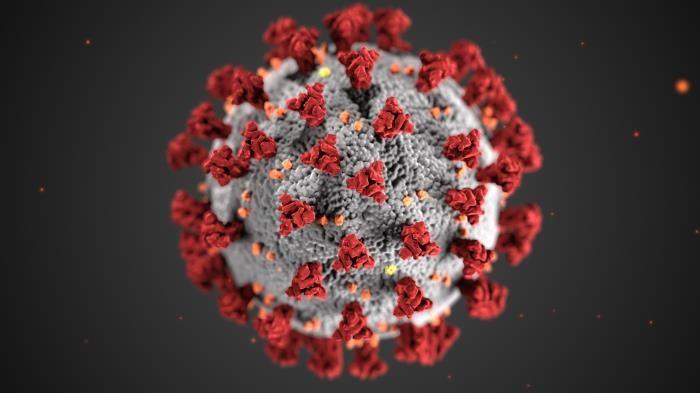
• Aerosol Transmissible Diseases
• Lighting Safety
• Noise Exposure

• Active Shooter Preparation
• Great Shakeout Awareness





• Aerosol Transmissible Diseases
• Lighting Safety
• Noise Exposure

• Active Shooter Preparation
• Great Shakeout Awareness

Aerosol Transmissible Diseases (ATDs) are infectious diseases that spread through the air via particles or droplets. Transmission occurs through inhalation or contact with mucous membranes of the respiratory tract or eyes.
• Airborne Infectious Diseases (AirIDs): Subset of ATDs transmitted through airborne routes.
• Aerosol Transmissible Pathogens–Laboratory (ATPs-L): Pathogens aerosolized in labs
• Zoonotic ATDs: Transmitted from animals to humans
Aerosol Transmissible Diseases (ATDs) are transmitted primarily through the air via infectious particles. Transmission occurs through the Chain of Infection steps. If any one of these steps is removed, the likelihood of disease transmission is significantly decreased or completely eliminated:

Respiratory particles can be classified as being droplets or aerosols (fine droplets) based on particle size and their aerodynamic behavior. Both droplets and aerosols can be generated during coughing, sneezing, talking or exhaling. The difference is that large droplets settle rapidly, whereas small aerosols can remain airborne and travel over longer distances by airflow.
As for the respiratory tract, aerosols are more likely to be inhaled deeply into the lower respiratory tract (affecting the lungs and alveolar tissues), while larger droplets will remain trapped in the upper airway. For this reason, infections caused by aerosols can lead to more serious illnesses.
A few ATD Examples:
A few ATD Examples:
• Colds
• Colds
• Flu (including H1N1)
• Flu (including H1N1)
• Covid
• Covid
• Whooping Cough
• Whooping Cough
• Tuberculosis
• Tuberculosis
• Measles
Signs and symptoms generally include combinations of the following: coughing and other respiratory symptoms, fever, sweating, chills, muscle aches, weakness and malaise.
Signs and symptoms generally include combinations of the following: coughing and other respiratory symptoms, fever, sweating, chills, muscle aches, weakness and malaise.
Remember that any break in the Chain of Infection will make a significant difference!
• Practice cough etiquette (cover your cough)
• Wash your hands often using proper hand washing techniques
• Use a Facemask
• Decrease exposure length

• Isolate yourself away from others if your are symptomatic or until you are no longer contagious
• Keep your ATD vaccinations and screenings current

Good lighting isn’t just having a bright space. It should enhance your space by providing enough illumination for not only visibility, but comfort as well. Poor lighting can result in a wide range of injuries and incidents. Maintaining appropriate lighting is essential in ensuring your safety, both inside and outside of the workplace.

Light is measured in lumens (1 lumen = 1 footcandle). But what does this mean? A footcandle measurement is based on the amount of light that reaches a surface area. Lumen/ Footcandle readings are typically obtained through the use of an instrument called a photometer. However, an easier way to determine if your area’s lighting isn’t quite right is using your own judgement. If you feel you space is too bright, or not bright enough, then it most likely is.
California Code of Regulations Title 8, Section 3317 lists the required minimum levels of illumination for Safety. The table below lists illumination levels for common areas based on typical activity levels.


Excessive lighting can be just as dangerous as having no lighting. Bright light can contribute to:
• Eye Damage
• Reduced Visibility
• Glares that can ultimately lead to serious injuries and/or incidents
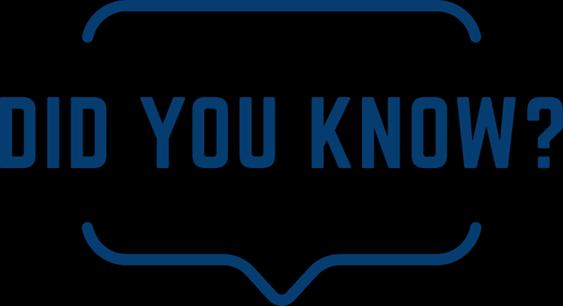
Reflective light is light that bounces off a surface. While some surfaces absorb the light, others often time reflect and redirect light. Direct light reflection may cause headaches to individuals with migraines or photophobia, especially if the reflective light is intense or glaring. To avoid reflective light, it is important to remain aware of the placement and direction of your light source.


When having to work in poor lighting, here are some tips to increase your safety:
• Make Yourself Visible: Wearing reflective clothing and avoiding dark clothes can reduce the risk of being struck.
• Coordinate an Alternative Route: If possible try to find a route to your destination with adequate lighting
• Remember to Test: Make sure your emergency lighting is working properly. Exit signs should light up at all times. If needed, report any lights that are no longer working. This may be a quick fix with a fresh set of batteries.
• Use the Buddy System: Poor lighting can contribute to higher crime rates. Stay vigilant and aware of your surroundings
• Slow Down: When driving through poorly lit area, remember to slow down and keep and eye out for pedestrians!
• Stay Ready: Make sure you’re stocked up on emergency lighting supplies like extra battery operated flashlights.
• Wear Your PPE: If working in a bright environment, wear UV Protectant eyewear.

Occupational noise exposure remains one of the most prevalent health related risks in the United States. According to the National Institute for Occupational Health and Safety (NIOSH) approximately 22 million US workers are exposed to hazardous noise levels each year. Prolonged exposure to high levels of noise can lead to permanent hearing loss, reduced situational awareness, and increased risk of accidents.
Noise is considered hazardous when it reached or exceeds 85 decibels dBa) as a 8-hour time-weighted average (TWA) . The louder the noise, the less time it takes to damage hearing.
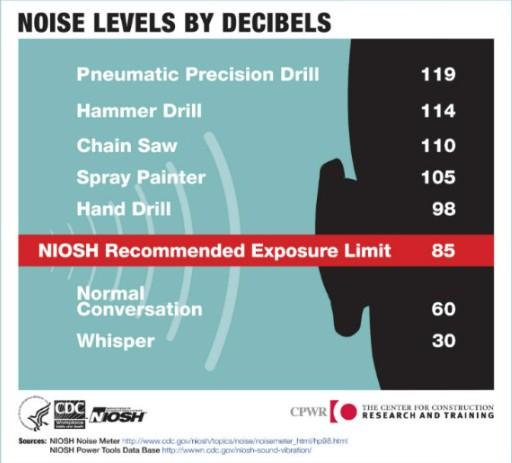

Noise can be classified into four main types:
• Continuous Noise: Steady and unchanging, like running machinery.

• Intermittent Noise: Starts and stops unpredictably, often varying in volume.
• Impulsive Noise: Sudden bursts, common in construction or demolition.
• Low-Frequency Noise: Deep, hard-to-detect sounds that can still disrupt.
• Ringing in the ears (tinnitus)
• Trouble hearing, “plugged” ears
• Needing to ask other to repeat themselves often
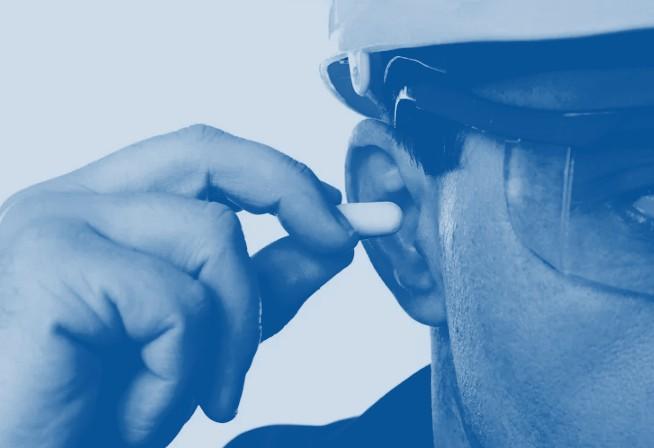

Preventing Hearing Loss— Employers and employees must work together to reduce noise exposure and protect hearing.
Stay as far away as possible from loud noise sources. Even a few feet can make a big difference
Limit Exposure Time: Limit the amount of time spent in noisy areas when possible.
Turn it Down: Lower the volume on devices, radios, and tools when possible.

Inspect/ Don your PPE: Ensure your hearing protection is in good condition, replaces per manufacturers recommendatio56n, and fit snugly every time.
Report Noise Hazards: If an area seems to loud let your supervisor, leadership, and safety loss control division know early action prevents permanent damage.
Conclusion

Protect your hearing, Protect your health. By understanding the risks, use proper protection, and following safe work practices we can protect our hearing for life. Whether you're operating machinery, working around loud equipment, or simply passing through a noisy area, always take noise exposure seriously.
Contact the Safety Loss Control Division
SafetyDivision@rivco.org to report concerns.
An active shooter is someone actively attempting to kill others, using deadly force in a populated area, often using firearms with victims chosen at random. These situations are unpredictable, unfold rapidly, and are extremely violent. It’s critical for individuals to be mentally and physically prepared.
Every County facility should maintain an Emergency Action Plan (EAP) that includes procedures for active shooter and other workplace violence (WPV) events in accordance with the County’s Zero Tolerance Policy for WPV (C-27). To reinforce preparedness and meet the biannual requirement for drills, Departments are encouraged to consider incorporating active shooter drills or table talk exercises into their safety training schedule. Collaboration with your local law enforcement agency and assigned Safety Loss Control Coordinator is recommended.
• Foster a Safe and Aware Workplace by:
• Encouraging staff to report concerning behaviors and threats.
• Promoting a “See Something, Say Something” culture
• Ensuring multiple egress routes in all areas
• Considering keycard access, lockdown capabilities, and controlled public access where appropriate.






RESOURCE: RUN.HIDE. FIGHT FBI VIDEO
If you encounter an active shooter situation, your actions can make the difference.
• If a safe route is available, evacuate the area immediately in a direction away from the attacker, leave belongings, help others if possible, and call 911 when safe.
• If you can’t escape, find a secure place. Lock or barricade doors, silence devices, and stay out of sight.
• As last resort, and only if your life is in immediate danger, act decisively to disrupt or incapacitate the shooter.
• Use available objects as improvised weapons
• You are fighting for your life. Don’t fight fair!
Law enforcement’s priority is to stop the shooter. Officers may arrive in tactical gear and will move quickly toward the last known location of the threat. Remain calm, follow instructions, drop any items, and keep your hands visible with fingers spread. Avoid sudden movements, yelling, or approaching officers. Provide key details if possible shooter’s location, description, weapons, and number of victims. Initial officers will not assist the injured; medical teams will follow. Once evacuated, stay at the designated area until cleared to leave by law enforcement.
STAY ALERT, STAY PREPARED, AND STAY SAFE.

Earthquakes can strike without warning, and California is no stranger to seismic activity. That’s why millions of people across the state participate in the Great ShakeOut Earthquake Drill each October. For 2025, the County of Riverside will join in the statewide drill to help staff and departments strengthen emergency preparedness.
What is the Great ShakeOut?
The Great ShakeOut is an annual opportunity to practice how to stay safe during an earthquake. The drill promotes earthquake readiness and encourages individuals, schools, and organizations to review and improve their emergency plans.
This year’s drill will occur on Thursday, October 16, 2025, at 10:16 AM.
• California experiences over 10,000 earthquakes per year, most too small to feel, but the risk of a major quake is real.
• Practicing safety measures helps reduce panic and injury when real earthquakes occur.
• Emergency preparedness builds a culture of resilience across the County workforce and community.
• Preparedness is not just for safety teams it’s a shared responsibility that empowers everyone to respond confidently during a crisis.
Under the California Code of Regulations, Title 8, Section 3220 (Emergency Action Plan), employers are required to develop and maintain emergency procedures for events like earthquakes.
This includes:
• Procedures for evacuation and shelter-inplace
• Emergency contact roles and responsibilities
• Annual training and drills
During the ShakeOut Drill, Practice the Three Key Actions:
• DROP to your hands and knees to protect yourself from falling.
• COVER your head and neck under a sturdy desk or table.
• HOLD ON to your shelter until the shaking stops.
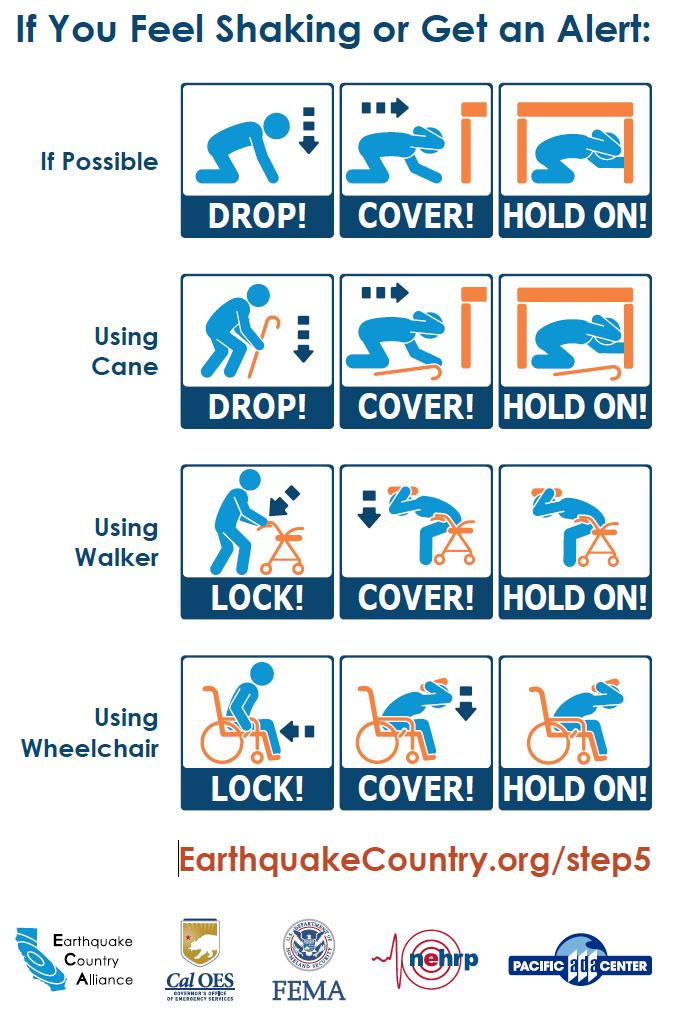

• Designate an individual to act as an Evacuation Leader for your department, team, or area of the building.
• Appoint a person (or persons) responsible for performing a headcount once evacuees reach
• designated safe zone.
• Identify staff members who are trained in first aid and assign them as First aid point of contact
• during an emergency.

• Designate Floor Wardens for each floor or section of the building, as well as alternate in case primary absent.

Before the ShakeOut
• Review your department’s Emergency Action Plan (EAP).
• Secure heavy objects, bookshelves, and electronics.
• Ensure go-kits and first aid supplies are stocked.
• Conduct tabletop exercises with your team.
• At exactly 10:16 AM on October 16, sound the alarm or announce the start of the ShakeOut.
• Everyone should Drop, Cover, and Hold On for at least 60 seconds.
• Supervisors should note participation and identify any issues.
• Emphasize no re-entry into unsafe spaces until officially cleared.
• Debrief with your team: What went well? What needs improvement?
1. What did you learn by practicing how to protect yourself?
2. What might fall on you or others if a real earthquake happened now right now? How might you move or secure those items so they won’t cause injury?
3. If power goes out in your area for several days or more, how long will cell phone batteries last? Do you or your family have a “powerbank” charger for phones?
4. How would you contact your family or others? Communicating via text or apps may be possible when calls are not.
5. What should you have in a disaster supplies kit?
6. What can you do now to improve your personal earthquake preparedness?
7. Is your Injury and Illness Prevention Plan current?
• Update emergency contact lists or evacuation maps if needed.
• Submit participation feedback to your Safety Coordinator.
• Know at least two exits from your building.
• Identify safe spaces away from windows, shelves, or overhead hazards.
• Keep a flashlight and emergency whistle at your workstation.
• Maintain comfortable footwear in case of evacuation.
• preparedness saves lives.
How can you write your IIPP?
There is HELP available from the Cal/OSHA website @ http://www.dir.ca.gov/dosh/etools/09
-031/ called eTool.
This eTool will produce a written IIPP for you by answering a set of questions (see How to Create Your Written IIPP - Questions). Each of your answers will automatically appear underlined in a written IIPP which is specific to your workplace. To produce a complete written IIPP you must fully answer all the IIPP questions.
• Review your IIPP at least annually, or whenever your workplace changes.
• Keep a printed and digital copy on hand.
• Train all employees on the IIPP
• Use your IIPP to drive a culture of safety not just for compliance.
